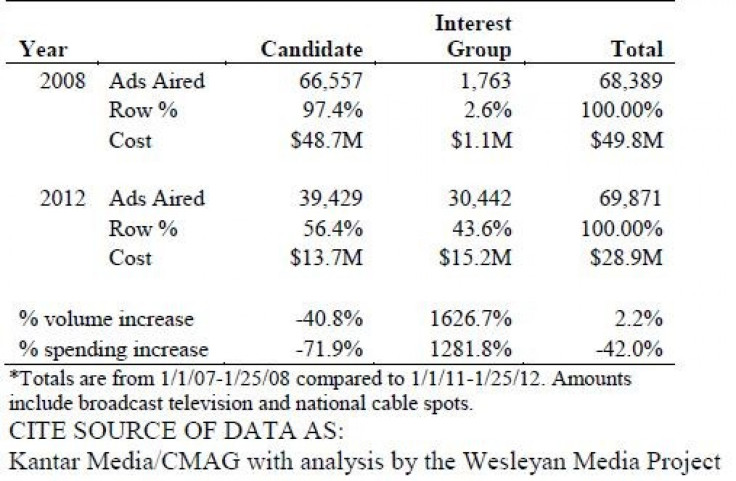Super PACs to Name Big Donors Tuesday, First Disclosure Since June

The shadowy, anonymously-funded political advocacy groups known as super political action committees (PACs) have made headlines this election cycle by spending millions of dollars on primarily negative attack ads, a strategy that by all accounts has had an enormous influence on the Republican presidential primary race.
Now, the American public will find out just who funded the ads that have helped shape the 2012 presidential election.
Super PACs will begin disclosing the names of the big-time donors financing their operations on Tuesday for the first time since the GOP primary race began in earnest. At the beginning of this year, many of those groups took advantage of a federal law allowing them to shield donors' identities until Jan. 31, after the first four presidential primaries had already taken place.
Now, as part of a compromise that requires super PACs to issue financial disclosure reports on a monthly basis from this point on, those organizations will begin releasing their fourth quarter fundraising reports, covering contributions and expenses from Oct. 1 through Dec. 31.
Campaign finance laws state that super PACs are only required to file disclosure reports semi-annually on election years, meaning candidate-specific advocacy groups -- which are allowed to raise unlimited sums of money toward election efforts, as long as they do not donate funds directly to or coordinate with a candidate -- have not revealed a good portion of their contributors since last June.
Super PACs: Spending Way Up in 2012, Boosting Romney
Super PACs may not contribute directly to a candidate's campaign, but a recent analysis by the Wesleyan Media Project suggests they may be covering some of the most expensive costs associated with national campaigns: ad buys.
During the 2008 Republican primary, campaigns purchased just over 97 percent of the ad space, spending more than $48 million dollars to produce and air crucial television and radio advertisements while interest groups expended a paltry $1 million. In comparison, more than half of the spending in the 2012 primary has come from outside groups, who have thus far spent $15.2 million to promote the candidates of their choice -- a 1600 percent increase in interest-group sponsored ads since 2008.
The influence of those advertisements can be seen in Florida, where GOP voters are casting their primary ballots on Tuesday. The pro-Romney group Restore Our Future has aired 12,768 advertisements to help Mitt Romney hold his position as the GOP frontrunner, spending millions on ads attacking Romney's closest competitor, Newt Gingrich, in the Sunshine State alone.
One reason we've seen the Florida polls shift in Romney's favor over the past few days, when the national polls have not, is that his message has dominated the paid airwaves in the Sunshine State, Travis Ridout, an associate professor of political science at Washington State University and director of the Wesleyan Media Project, said in a statement. Gingrich -- and Paul and Santorum -- have had a much more difficult time making themselves heard.
Restore Our Future has spent more than $16 million on anti-Gingrich ads, according to the Center for Responsive Politics, more than five times the amount the pro-Gingrich super PAC Winning Our Future has expended on Romney attacks. Although Gingrich campaigned in Florida on the tailcoats of his primary win in South Carolina, USA Today reports the Gingrich super PAC has only aired 210 television ads in the state.
--
© Copyright IBTimes 2024. All rights reserved.











